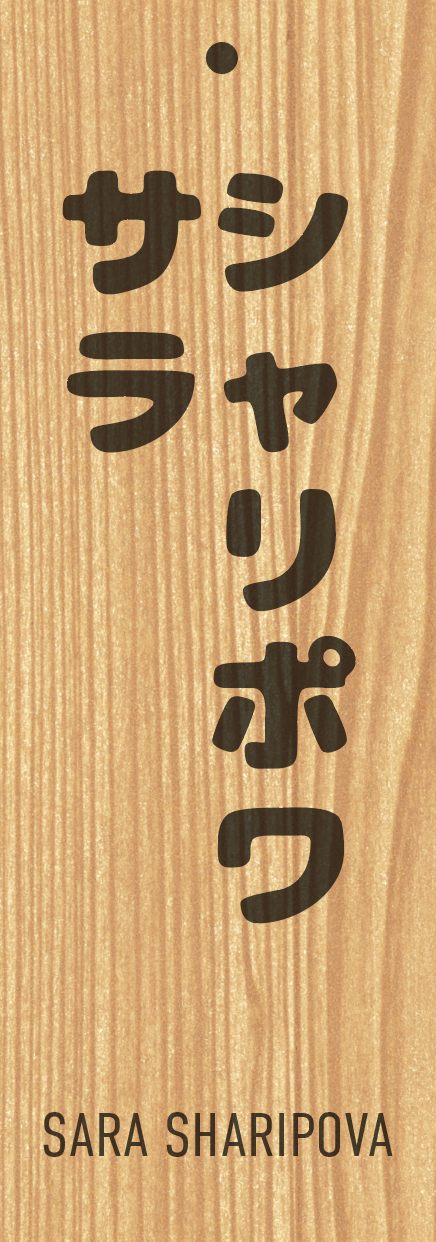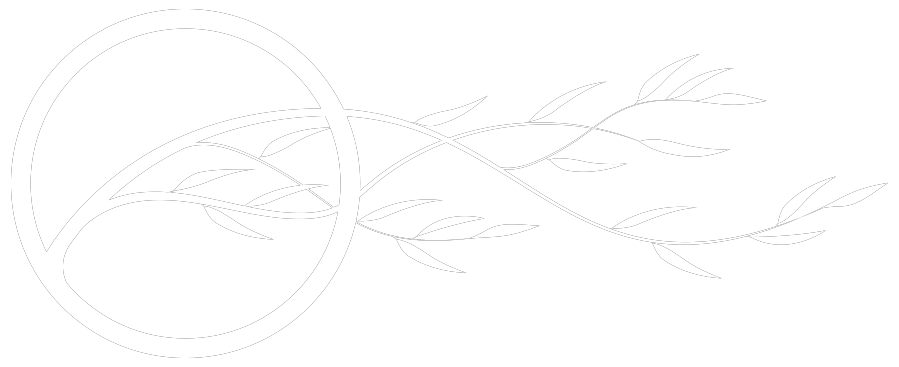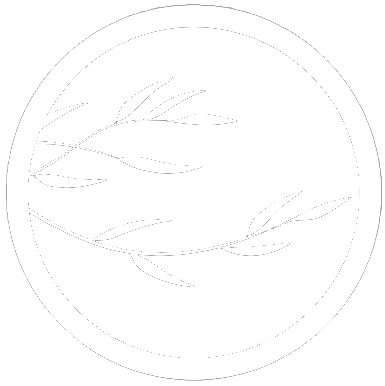


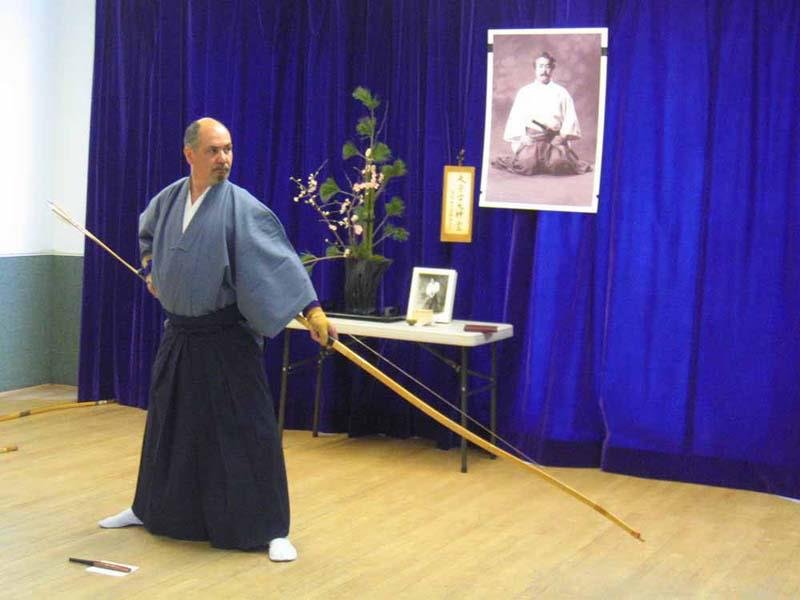



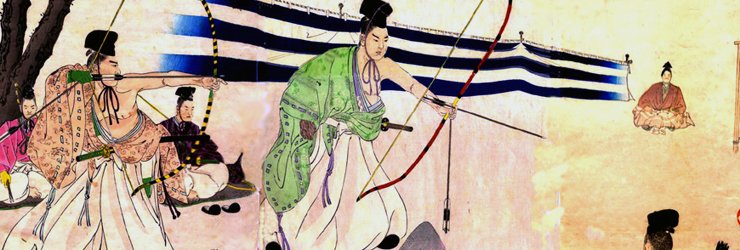


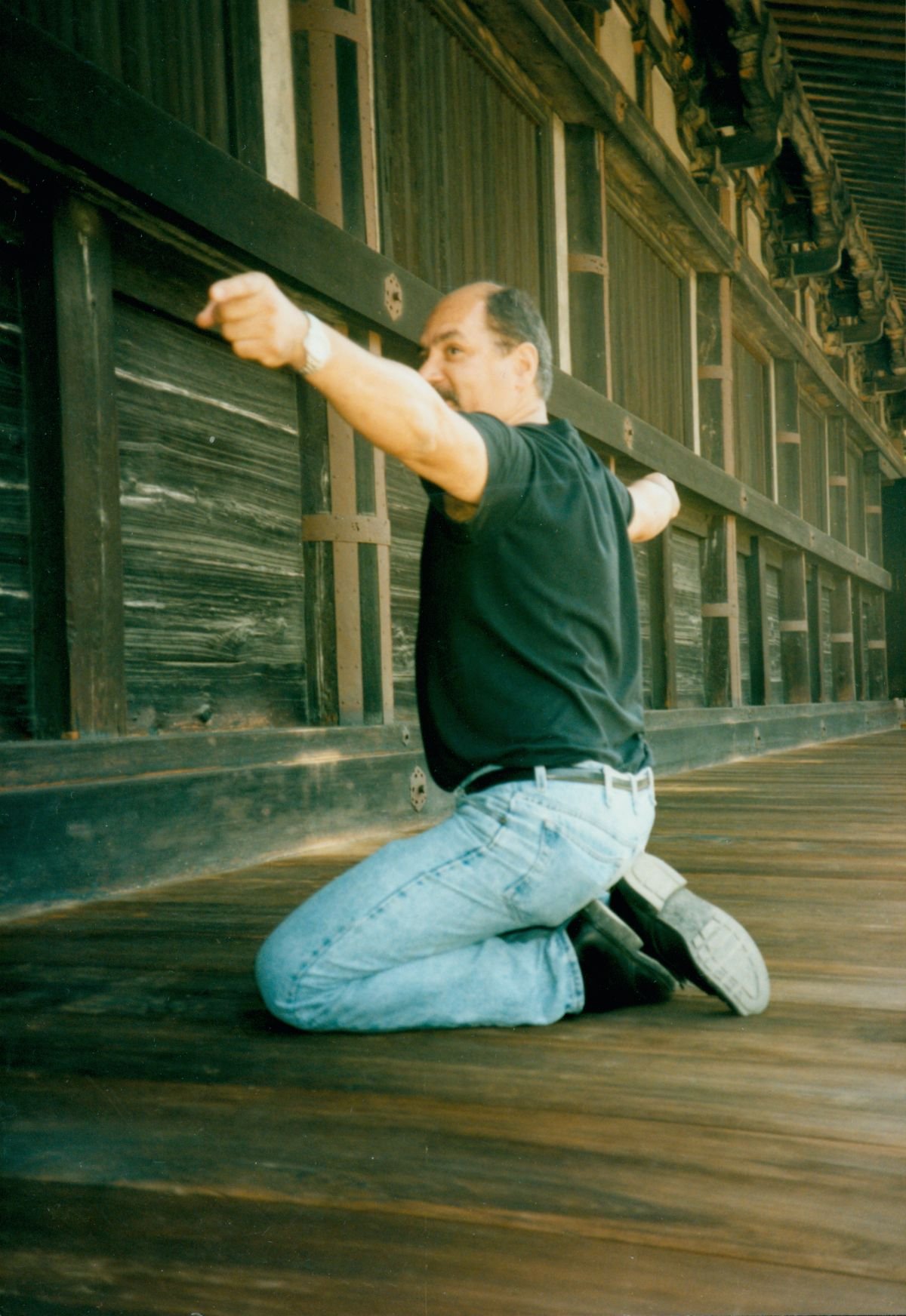
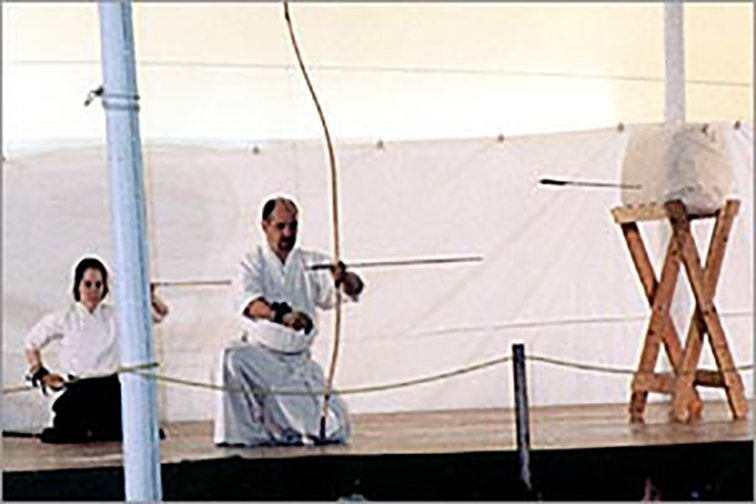
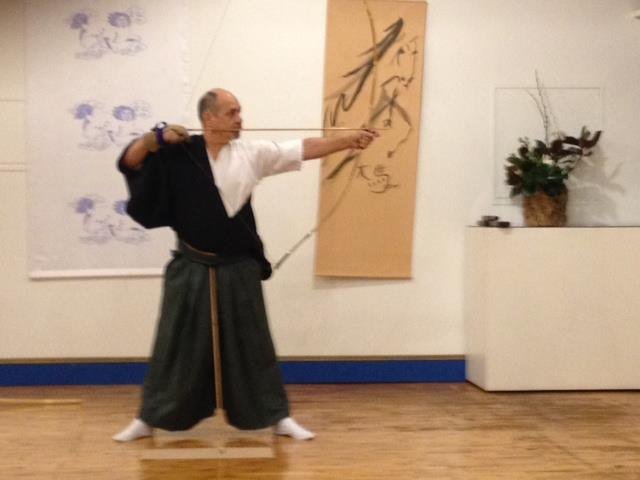
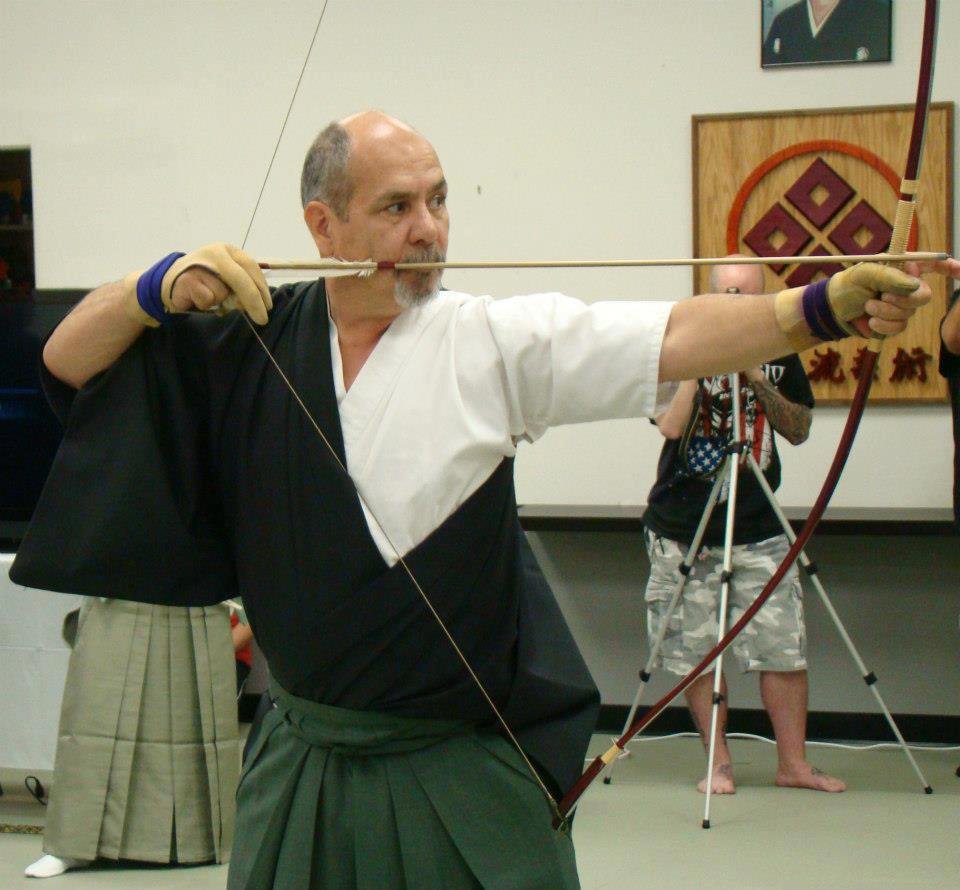
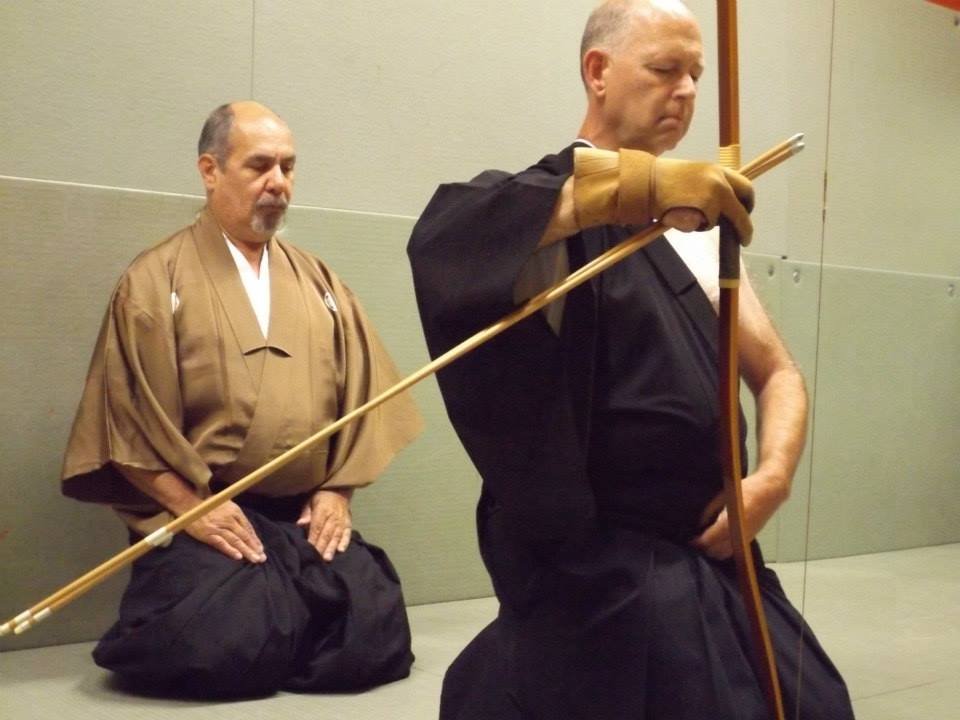
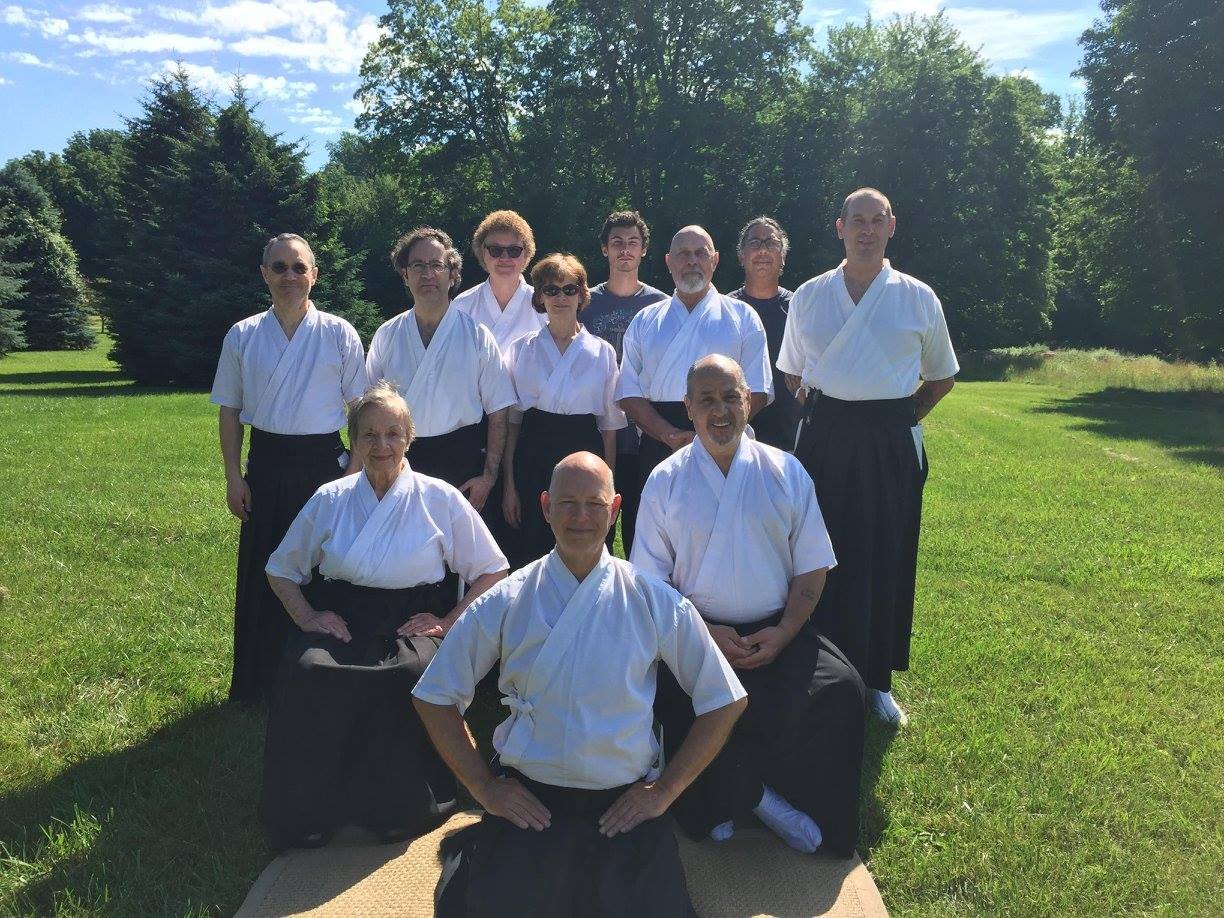
KYUDO (弓道)
Kyudo is the practice of Zen archery which is a form of moving meditation. The NYBA Kyudo group practices a warrior style of traditional Japanese archery called Heki Ryu (竹林派) Bishu Chikurin-Ha school of Kyudo. The focus of the practice is on “cleaning the mind” rather than on marksmanship. The target becomes a mirror reflecting the quality of one’s mind at the moment of the arrow’s release.
Our practice provides training in Kyudo’s Seven Coordinations – the basic form for aligning the body and properly releasing the arrow.
Qualified practitioners of the Renmei style of Kyudo are also welcome to join our weekly practices.
“One is not polishing one’s shooting style or technique, but the mind.”
CLASS TIME 7 – 9 PM || WE ARE NOW SHOOTING DISTANCE TARGETS AS WELL
>>>>>----------------------->
CLASS TIME 7 – 9 PM || WE ARE NOW SHOOTING DISTANCE TARGETS AS WELL >>>>>----------------------->
NYBA KYUDO members are required to pay monthly dues to newyorkbudoassociation@gmail.com through Direct Deposit, PayPal, Zelle, or Venmo (we also accept cash and personal checks). Payments are due on the first of the month. There is a $25 mat-fee for those NYBA KYUDO members who wish to “drop-in” to a class now and then, which goes to offsetting the cost of the room.
For those members wishing to study both Kyudo and Iaido the monthly fee is – $60 per month (only +$10)
The history of the Kyudo school "Heki ryu Bishu Chikurin ha" starts around the year 1600. The name refers on the one hand to Heki Yazaemon Noritsugu and therefore to the tradition of Heki on the other hand to the true founder of the school, the monk Chikurinbo Josei. (see: Chikurinbo Josei)
Originally Heki ryu Bishu Chikurin ha was native in the area of Nagoya, whereon the name part “Bishu” refers to.
Kyudo has envolved partly from a military discipline which was used in wartime and partly from a strictly formalized ceremonial archery which was practiced already in the time of Konfuzius in China. Still until today there exist many style elements – particularly in the school Chikurin ha – which refer directly to the ancient combat situation.
The foundation of the Kyudo practice are the seven coordinations which exist since the very beginning of the school. They define the whole shooting process. The student strives for perfection to perform them as precisely as possible.
The point is not to reach an identical form of all students, in limits they are allowed to show their individual character and this is even desirable.
Chikurin ha is not member of the International Kyudo Federation (IKYF) because it has no system of degrees, there are no exams to attain a Dan. Advanced students support the beginners on their way.
The Dojos in Europe are structured in the umbrella organization OKO. Sitting meditation is practiced in many Dojos additionally to Kyudo.
More than 20 Dojos exist in Europe, namely in Germany, France, Austria, Switzerland, Netherlands, Spain and Czech republic. Additional Dojos exist in US and in Canada. In Japan Chikurin ha is only rarely represented.
The bowmaker family Shibata practices this Kyudo tradition since 21 generations. Current head is Shibata Kanjuro XXI, Sensei (see: Shibata Kanjuro XXI, Sensei)
Sensei Ortiz began a comprehensive study of Kyudo in 1975. He worked under the tutelage of Shigagi Sensei in NYC and later with Kanjuro Shibata Sensei, and Sensei Don Simanski. During his many visits to Japan he also had the opportunity to work with the Takeda Kybado (horse archery) near Kamakura. In the United States in Fort Dodge, Iowa, he studied with head archers Kyueki and Misa Tsuyoshi of the Takeda Kyubado. Currently, Phil Ortiz teaches Zen Archery under the guidance of Rick Beal Sensei.
This study group meets 1X per week (Thursdays 6 PM (EST)) for in-person classes as well as online instruction. In this class students will learn the art of Kyudo, as well as the etiquette involved in the practice. Classes will be recorded
Equipment can be adapted for online training – as the Yumi (bows) are very large we suggest using simple resistance bands to reflect the draw of the bow. You can also use a simple dowel which can mimic the feel of an arrow (we can assist you in setting these up for your practice).
HISTORY
The beginning of archery in Japan is, as elsewhere, pre-historical. The first images picturing the distinct Japanese asymmetrical longbow are from the Yayoi period (ca. 500 BC-300 AD). The first written document describing Japanese archery is the Chinese chronicle Weishu (dated around 297 AD), which tells how in the Japanese isles people use “a wooden bow that is short from the bottom and long from the top.”[3] During these times the bow began to be used in warfare in addition to hunting. Later, the ceremonial use of a bow was adopted from China and continued in Japan after it had ended in China. The composite technique of bow manufacture, by gluing together horn, wood, and animal sinew, was also imported from China.
Emergence
The changing of society and the military class (the samurai) taking power at the end of the first millennium created a requirement for education in archery. This led to the birth of the first kyudo ryha (style), the Henmi-ry, founded by Henmi Kiyomitsu in the 12th century.[4] The Takeda-ry and the mounted archery school Ogasawara-ry were later founded by his descendants. The need for archers grew dramatically during the Genpei War (1180-1185) and as a result the founder of the Ogasawara-ry, Ogasawara Nagakiyo, began teaching yabusame (mounted archery).
Civil war
From the 15th to the 16th century Japan was ravaged by civil war. In the latter part of the 15th century Heki Danj Masatsugu revolutionized archery with his new and accurate approach called hi, kan, ch (fly, pierce, center), and his footman’s archery spread rapidly. Many new schools were formed, some of which, such as Heki-ry Chikurin-ha, Heki-ry Sekka-ha and Heki-ry Insai-ha, remain today.
~1500s~
The yumi (Japanese bow) as a weapon of war began its decline after the Portuguese arrived in Japan in 1543 bringing firearms with them in the form of the matchlock.[5] The Japanese soon started to manufacture their own version of the matchlock called tanegashima and eventually the tanegashima and the yari (spear) became the weapons of choice over the yumi. The yumi as a weapon was used alongside the tanegashima for a period of time because of its longer reach, accuracy and especially because it had a rate of fire 30-40 times faster. The tanegashima however did not require the same amount of training as a yumi, allowing Oda Nobunaga’s army consisting mainly of farmers armed with tanegashima to annihilate a traditional samurai archer cavalry in a single battle in 1575.
~1600s on~
During the Tokugawa period (1603-1868) Japan was turned inward as a hierarchical caste society in which the samurai were at the top. There was an extended era of peace during which the samurai moved to administrative duty, although the traditional fighting skills were still esteemed. During this period archery became a “voluntary” skill, practiced partly in the court in ceremonial form, partly as different kinds of competition. Archery spread also outside the warrior class. The samurai were affected by the straightforward philosophy and aim for self-control in Zen Buddhism that was introduced by Chinese monks. Earlier archery had been called kyjutsu, the skill of bow, but monks acting even as martial arts teachers led to creation of a new concept: kyd.
~Revival~
During the changes brought by Japan opening up to the outside world at the beginning of the Meiji era (1868-1912), the samurai lost their position. Therefore, all martial arts, including kyudo, saw a significant decrease in instruction and appreciation. In 1896, a group of kyudo-masters gathered to save traditional archery. Honda Toshizane, the kyudo-teacher for the Imperial University of Tokyo, merged the war and ceremonial shooting styles, creating a hybrid called Honda-ry. However, it took until 1949 before the All Japanese Kyudo Federation (ANKF, jap. Zen Nihon Kyd Renmei) was formed. Guidelines published in the 1953 kyudo kyohon define how, in a competition or graduation, archers from different schools can shoot together in unified form.















